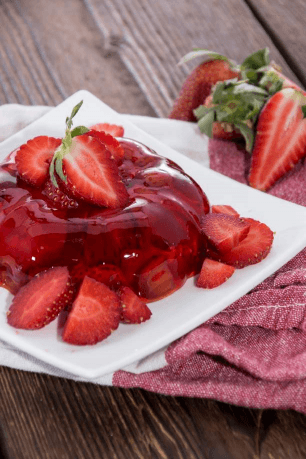Shukria Yusuf
External: CAFE
Gummy bears, candy corn, Starburst, marshmallows, Jell-o…oh boy! All this sweet talk made my mouth water. These delicious treats have more in common than just being tasty and a dentist’s worst nightmare. Gelatin is the glue that keeps all these yummy treats together. Gelatin can be used for a variety of reasons— from thickening desserts and soups, to medicinal uses, and even cosmetic uses. Gelatin is a pure protein with 18 amino acids derived from collagen found in pig skin and bovine (cow) bones. Whilst there are other sources that gelatin can be derived from, Gelatin is a pure protein with 18 amino acids. It can be derived from many sources such as the collagen found
in pig skin and bovine (cow) bones. Today’s focus will be on two different types of gelatin; food-grade Gelatin (gelling) and hydrolyzed Gelatin (non-gelling).
There are about seven steps in the production of gelatin. First, there is an inspection of the animal parts and any spoiled pieces will be thrown out. Then using chopping machines that cut bones, tissues, and skins, the animal parts are then cut into small pieces of approximately 12.7cm in diameter.The next step is degreasing and roasting where the animal parts are cleaned through high pressure sprays, then they are left in hot water to remove any grease and fat. The fat reduced and cleaned parts will make their way under an industrial dryer and will be roasted for a period of 30 minutes. After they are roasted, the animal parts will undergo an acid or alkaline treatment for five days which helps to release collagen and remove minerals and bacteria.
When the five days are up, the pieces will be thrown into distilled water where they will be boiled. A tube will be inserted to drain the liquid which contains the gelatin. The liquid will be passed through filters to remove any remaining bones or skin attached and “from the filters, the liquid is piped into evaporators, machines that separate the liquid from the solid gelatin”. The liquid will be thrown out while the gelatin will go through multiple machines that will press it into a sheet. The sheet is then grinded into a powder.
Finally, if the purpose of the gelatin production is for consumption, additives such as sugar, flavouring, and colour will be included and the gelatin will be packaged to be distributed.
You just learned how gelatin is made, but now you might be wondering what it’s used for. You probably recognize gelatin from the grocery store in some of your favourite desserts and confectioneries. The gelatin used for this is gelling gelatin, a type of gelatin designed to keep foods together and thicken them. However, did you know that the use of gelatin goes beyond the food industry? Gelatin can be used as an adhesive in your basic household items such as paper towels. Ever wondered what that sticky line was at the end of the roll? You got it, it’s gelatin! It can be referred to as “protein glue” or “hide glue” [3]. It plays a huge role in the cosmetic industry since gelatin is a good source of collagen which is proven to strengthen skin and promote elasticity; this is a great example of hydrolyzed gelatin. It can come in powder form as well. This type of gelatin does not require digestion. Not only will you find gelatin in your food and skincare but you will also find it at a doctors office. Now, don’t worry, I don’t mean that your doctor will prescribe Jell-o for a headache (but it sure is a great snack!).
As mentioned earlier, gelatin is made of proteins and amino acids which are both vital in wound healing thus being found in salves, ointments, jellies, and such. The list does not end there! The various uses of gelatin— photography, wine, cheese, pet food, and gel capsules, to name a few—each prove that gelatin is a versatile commodity. Gelatin has travelled far past the food industry and it looks like it will be sticking around for a long time.

